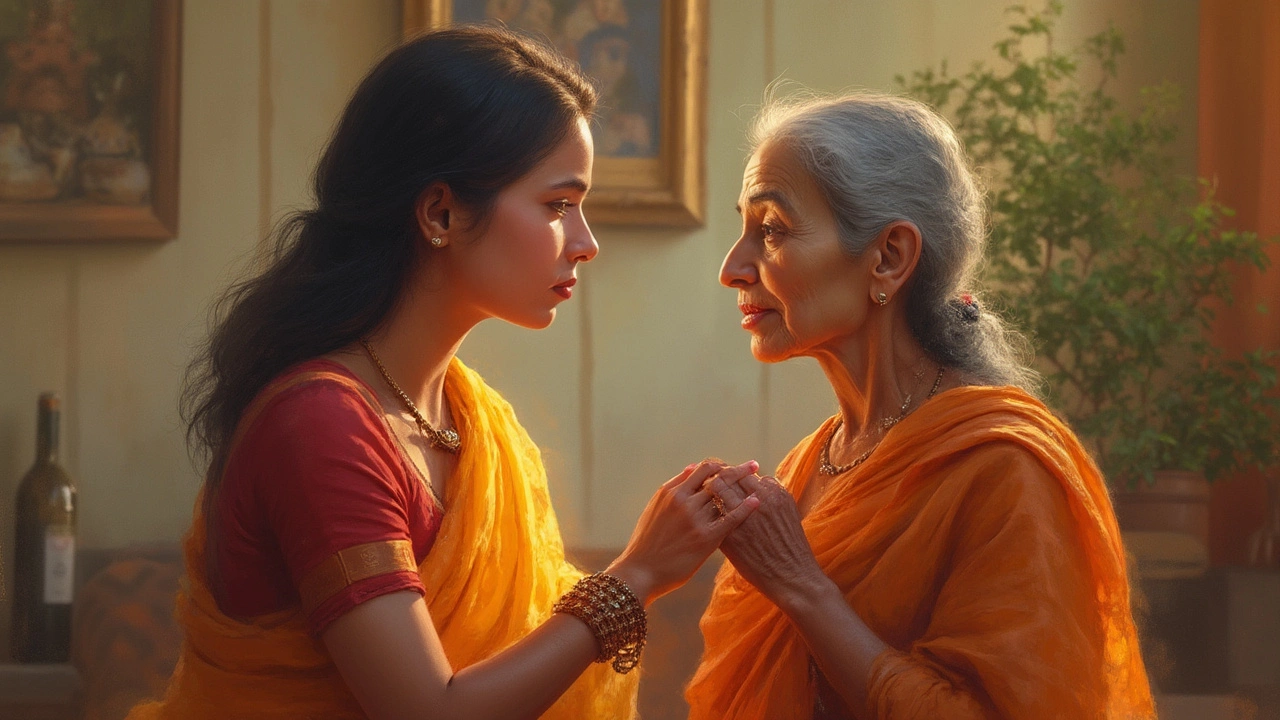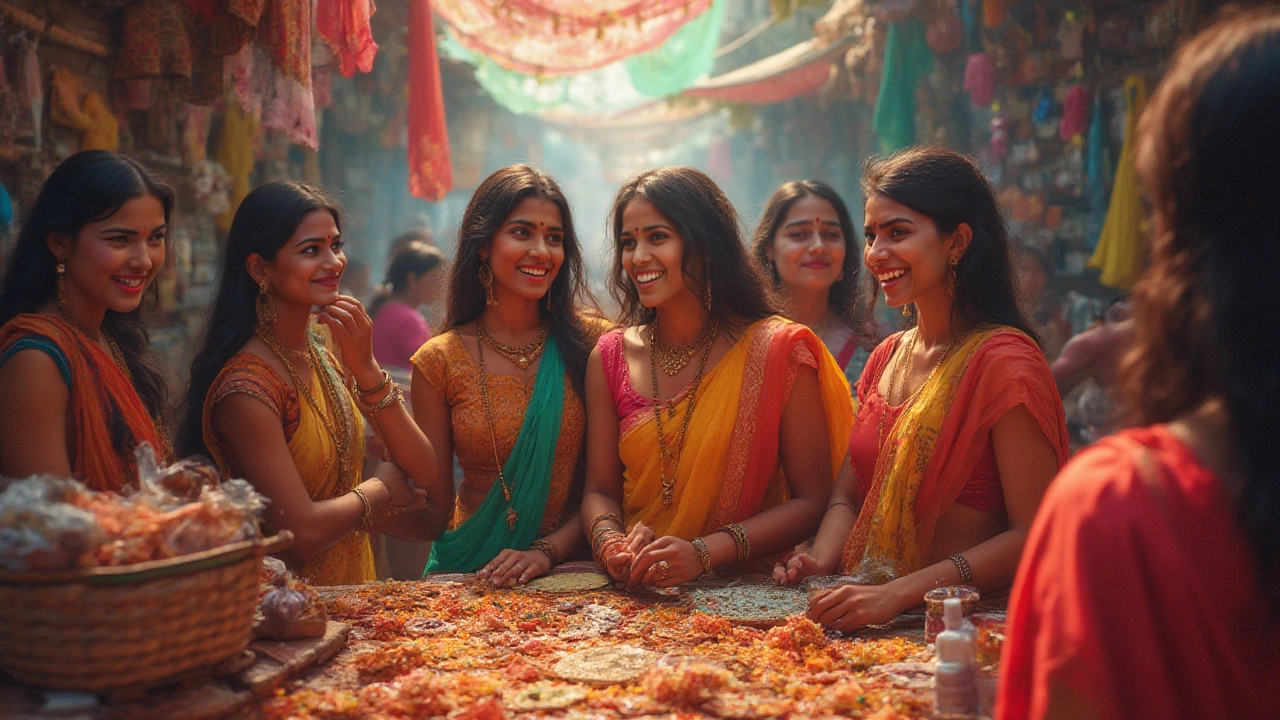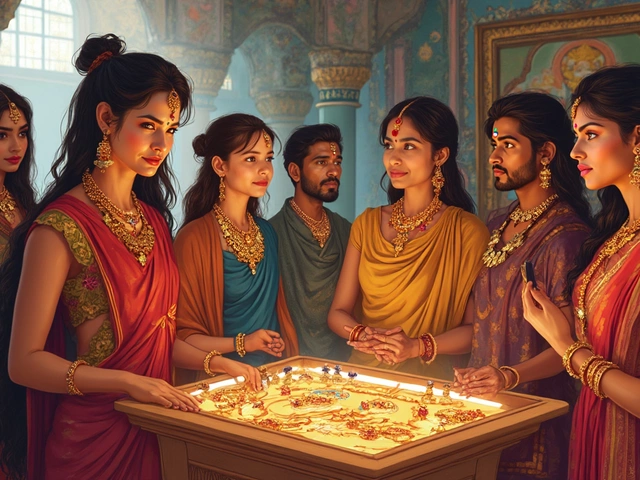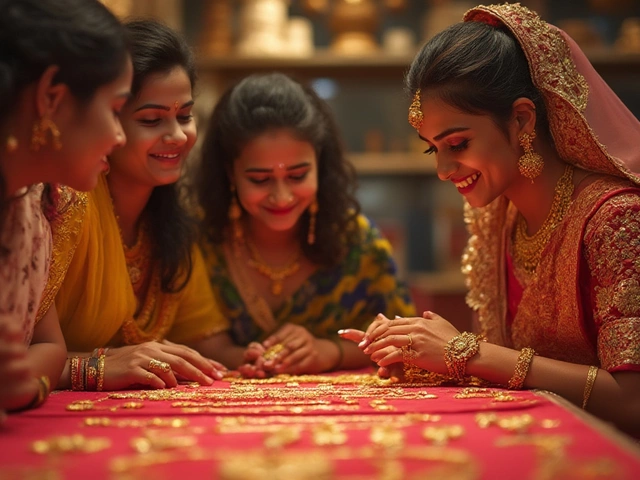Take a crowded Mumbai local or scroll through Instagram on Karva Chauth, and you’ll spot the glint of a mangalsutra around countless necks. Or… will you? The truth is, it’s becoming more common to see women without one, even right after marriage. The big debate is out in the open—does not wearing a mangalsutra mean a wife is less married? Does it question tradition, or just reflect how society, fashion, and mindsets are changing?
The Mangalsutra’s Origins and Its Symbolism
The mangalsutra didn’t just pop up out of nowhere. This black and gold beaded necklace roots itself deep in Indian wedding customs, especially among Hindus. Legend says that the thread was originally blessed by priests to keep the evil eye away from the bride. In many regions, it’s said to represent the bond of marriage—a type of lifelong protection by the husband. But did you know the mangalsutra’s design and meaning aren’t the same everywhere? For Marathis, it’s called a vati; Tamilians tie the thali knot; Sindhis have their own style too. That’s why when people say, “You must wear it to show you’re married,” the truth is, the traditions have always been flexible.
What gets missed is this: the mangalsutra isn’t some ancient, one-size-fits-all tradition. In fact, in early centuries, some communities didn’t have it at all—rings, bangles, toe rings, or sindoor played the role. Even the whole notion that one mangalsutra should be worn daily is relatively new, boosted by movies, daily soaps, and the jewelry ads you see between cricket overs. Today’s bold designs, diamonds, and customizable lengths are a recent trend—earlier, only simple beads mattered. That proves how this necklace keeps evolving, and so do its social meanings.
Ask elders, and many will say, “It’s not about gold or value. It’s about respect for marriage.” Yet if you dig into India’s legal system, there’s no law that says the mangalsutra is compulsory for a valid marriage. All the significance is cultural, not legal. So what matters more: what society thinks, or what the couple wants?
Changing Mindsets: Why Many Women Are Choosing Not to Wear It
Step into a busy urban office, or even a wedding itself, and you’ll notice today’s younger women are leading the change. Some find mangalsutras impractical for daily life—especially if you’ve ever tried untangling one after a 10-hour flight, you know what a pain that is! Others feel it clashes with their style or workplace dress code. For a lot of women, jewelry is now about personal expression, not social status.
A survey by a popular wedding platform in 2023 showed nearly 42% of urban married women in their 20s had stopped wearing the mangalsutra daily. Many skipped it completely, swapping it for engagement rings or just nothing at all. Do their marriages feel less meaningful for it? Not at all. Some even see it as a sign of equality—why should only women carry a visible “married” marker? Men don’t have to parade around with a special chain, after all.
Social media has played a weird role too. It’s not just about rebelling for the sake of it: many women simply feel pressured by the glitz, with celebrities sporting luxury mangalsutras worth lakhs, leading them to wonder if simpler, older pieces are “good enough.” The truth is, breaking free from all that glitter sometimes feels like a relief. Whether you wear a mangalsutra of 20 grams or none at all, it’s your marriage, your choice. The key is that partners communicate about what each prefers—if your husband values the tradition, talk about why, instead of just giving in or rebelling. Genuine understanding matters way more than the necklace itself.
Some families, even in smaller towns, are relaxing. In places like Pune, Kanpur, and parts of Kerala, it’s not unusual to see teachers, doctors, IT professionals, or even businesswomen skipping it during weekdays and saving it for special occasions. That’s a huge shift from just a few decades ago, when leaving home without it would cause a mini-scandal or at least invite intrusive questions from the aunties. These days, more people are learning to give space, and many husbands actively support their wives’ choices as an act of partnership, not just compliance.

Social Expectations Versus Personal Freedom
Anyone who’s married in India will tell you about the awkward looks or loaded questions: “Aap mangalsutra nahi pehente ho?” The stares at family functions, the surprise at work, sometimes even the shock from domestic help or relatives. What most folks don’t realize is the chilling effect this can have. Some women wear it just to avoid drama, not from any love for the thread.
The social expectation isn’t universal; it’s generational, regional, and partly about social class. If you grew up in a joint family or a traditional small-town setup, not wearing a mangalsutra might seem unthinkable—or even disrespectful to elders. In big cities, the pressure is lighter, but it’s never zero. Bollywood continues to paint the mangalsutra as almost sacred. Remember the many soap operas where removing the chain foreshadows disaster or death? It’s no wonder the symbolism runs deep, but does fiction really need to set our real-life priorities?
Let’s be real—for some older folks, the mangalsutra marks security. It’s how they identify a woman’s marital status instantly, much like wedding rings in the West. But younger generations are pushing back: they argue that love and loyalty aren’t measured in gold or beads. This isn’t about disrespect; it’s about living on your terms. That said, anyone skipping the mangalsutra should expect occasional judgment or questions—being mentally prepared helps.
Here are a few tips for navigating the social tightrope:
- Keep a friendly but firm explanation ready—simple, honest answers like, “I find it uncomfortable for daily use,” or “We both decided it’s not necessary for us,” work better than defensiveness.
- For traditional family events, some women choose to wear the mangalsutra as a sign of respect, just like covering your head in a temple even if you don’t do so daily. That’s perfectly okay—the ritual can be yours to choose, not a burden to carry.
- If you’d rather keep peace, why not opt for a more delicate chain? Many jewelers now offer subtle mangalsutras that can double as office-wear necklaces.
- Having open conversations at home before going mango-free can smoothen things out and keep the family drama at bay.
Personal Stories: Voices on Both Sides
Nothing brings an idea alive like stories. My cousin Aarushi, after her beach wedding in Goa, tucked away her ornate mangalsutra in a locker, wearing it just for pujas—and no one bats an eyelid at her startup workplace in Bengaluru. Then there’s my friend Devika in Nashik, who sports her delicate gold-black thread daily—not for tradition, but because her mother gifted it with so much love that it feels like a warm hug. For some, the mangalsutra is tradition. For others, pressure. The difference is deeply personal.
Mukta, a Mumbai-based lawyer, laughs about her first day in court post-wedding: “My senior whispered, ‘No mangalsutra? You forgot, or you’re making a statement?’ But when I said I wore my wedding band instead, a bunch of colleagues shared how they did the same. Turns out, silent support is everywhere—you just have to speak up sometimes.”
Not all stories are rosy. Rupa from Lucknow remembers how her mother-in-law wept when she skipped the chain for a seminar in Delhi. “It was never about faith for me, just practicality—but it took patience to get the family to understand that I’m as married as ever,” she admits. These stories aren’t special cases; they’re part of the new normal, especially in cities and among dual-earning couples. And for those who combine tradition and modernity, there are creative ways out—a digital mangalsutra on your smartwatch face (yep, that’s a thing now), or simply celebrating your anniversary with the old chain at home while living chain-free the rest of the year.

Tradition, Fashion, or Personal Choice? The Future of the Mangalsutra
The mangalsutra is transforming—from a strict symbol to something fluid. Fashion designers are cashing in, releasing minimal chains that work with high-waisted pants as much as with saris. You can now spot influencers styling their mangalsutras layered with Western jewelry, or designers adding precious stones for a dressier, occasional-wear look. For those who still want to honor the tradition, styles are evolving fast—a nod to heritage, not a heavy shackle.
Some couples opt for couple-jewelry, like matching rings or bracelets, as a middle ground. Others create new rituals: say, sharing passwords, joint travel diaries, or even adopting pets (like me and my dog Bruno—his collar has my wedding date on it, which my wife totally approves of!). The point isn’t to rebel for rebellion’s sake, but to find symbols that fit you both. Marriage is about building a life together, not about showing off a particular necklace. Nobody can take that away from you, chain or no chain.
The tide is certainly shifting. Indian women are reimagining what marriage means on their own terms. For some, the mangalsutra will always be precious, and that’s valid. For others, skipping the necklace is about asserting freedom, comfort, or just practicality. Marriage in 2025 is less about ticking boxes and more about living authentically. One thing’s for sure—the strongest marriages today are built on trust, choice, and honest conversations, not dictated just by beads or gold. If you feel the same way, you’re not alone—and society is slowly waking up to that fact, one neck at a time.


